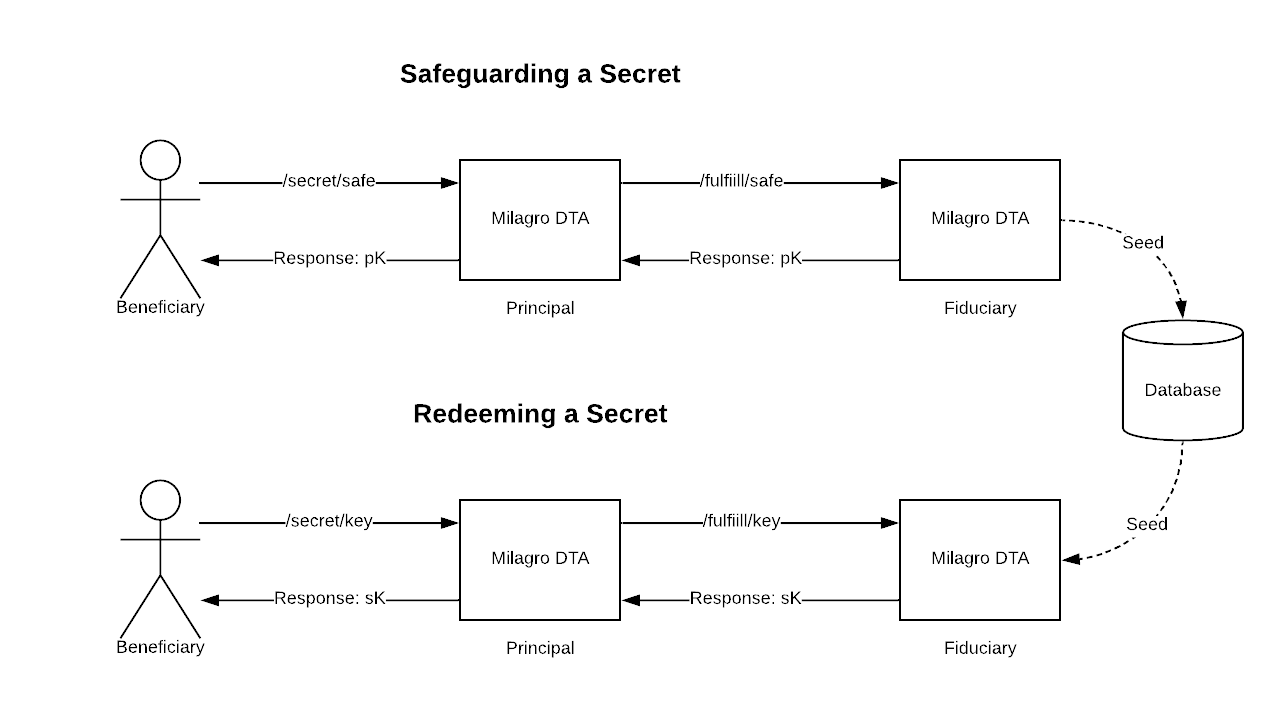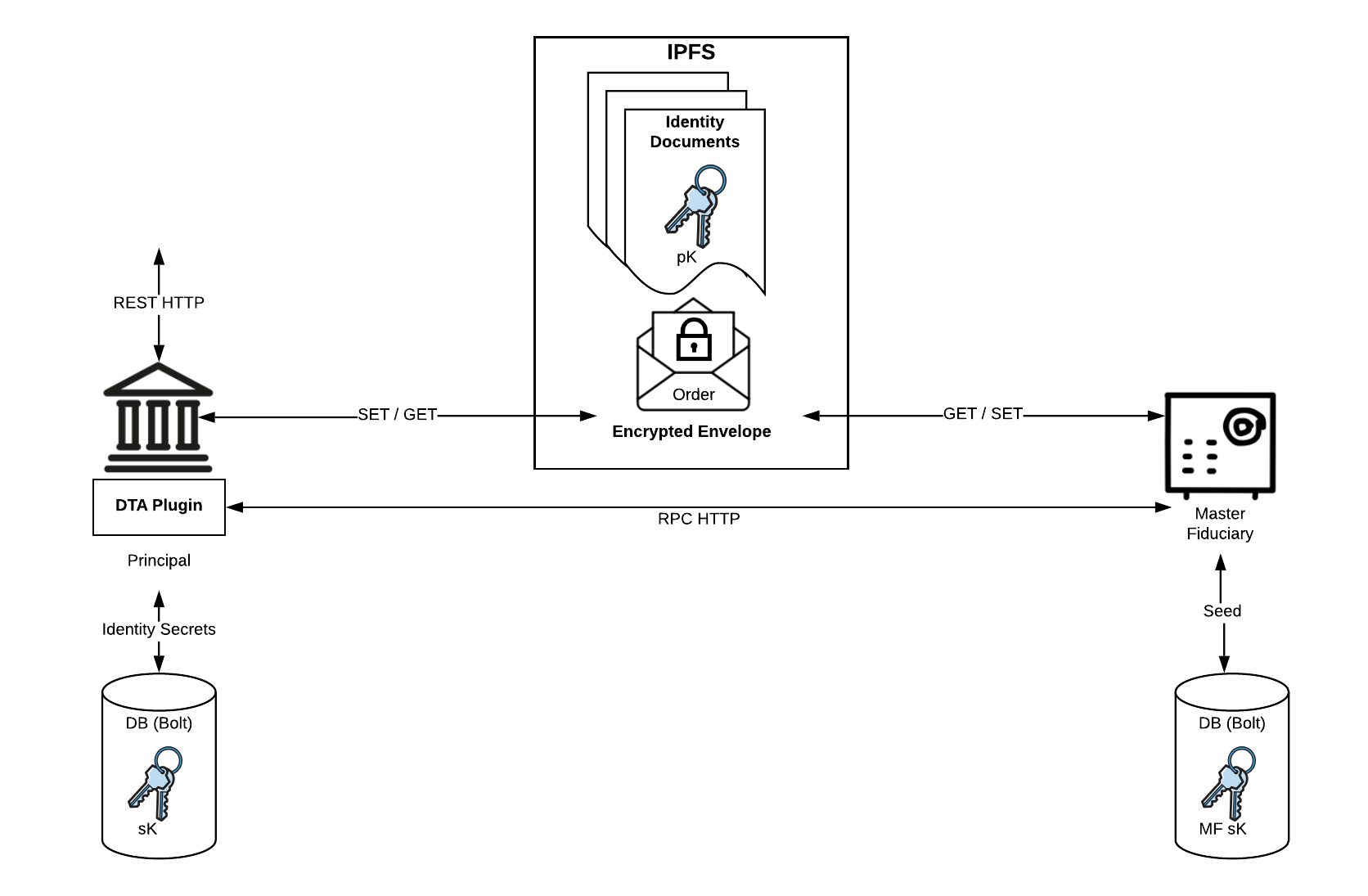Decentralized Trust Authority Overview
VERSION: ALPHA RELEASE 0.1.0
Release Schedule:
Beta Release: Q4 2019
RC1 Release: Q1 2020
Introduction
The Apache Milagro (Incubating) Decentralized Trust Authority (D-TA) is a collaborative key management server. It has two primary functions.
- Issue shares of identity-based Type-3 pairing secrets for initializing zero-knowledge proof multi-factor authentication (ZKP-MFA) networks of clients and authentication servers.
- Safeguards shares of generic secrets, acting independently but in conjunction with other D-TA nodes, for the benefit of other D-TA nodes.
In the use case where it issues shares, the D-TA holds nothing except for its Master Secret and acts as a distributed private key generation server. In the use case where it is safeguarding shares of secrets, it is up to the application developer to implement back-end application logic to hold those shares securely. Examples include using Hardware Security Modules (HSMs) via an on-board PKCS#11 implementation to create a realm of key encryption keys, or multi-party computation through BLS signature aggregation.
Roles
Operators of Decentralized Trust Authorities are segmented into three roles.
Principals - These entities operate a Milagro D-TA node to securely communicate with other D-TA nodes (Fiduciaries), employing them to issues shares of secrets or safeguard shares of secrets.
Fiduciaries - These entities operate \( 1 + n \) Milagro D-TAs to issue shares of secrets or safeguard shares of secrets.
Beneficiaries - These entities receive shares of secrets from Fiduciaries.
A D-TA facilitates secure and auditable communication between entities and service providers who can keep shares of secret keys safe (Fiduciaries). The D-TA is written in Go and uses REST services based on the GoKit microservices framework. The D-TA uses IPFS to create a shared immutable log of transactions and relies on Milagro-Crypto-C for it's crypto. Future release candidates will incorporate Tendermint for consensus protocol.
Safeguarding Secrets
In order to safeguard a secret using the D-TA a minimum of two roles are required: a client (Principal) and a server (Fiduciary). In addition a third party can be nominated as the ultimate recipient of the secret (Beneficiary). You can run a single D-TA to provide all three roles if you want to see it in action. See the quick start guide for instructions on how to do that.
This system can be imagined like a "network HSM". Below is a VERY simplified overview of the process:

Milagro D-TA Security
The Seed is the focus of the system - the D-TA provides a method for Principals to communicate with Fiduciaries who can secure their secrets, it does not prescribe how the securing should be done. The most basic implementation of a D-TA should secure seeds in an HSM using a PKCS#11 interface.
We hope that many custodial services will adopt the Milagro D-TA as a communication protocol and that they will bring a profusion of security paradigms, by working together we can make a dynamic market place for custodial services and together make the Internet a safer place.
The Milagro D-TA Communication Protocol
The D-TA provides a secure, distributed method of communication between Beneficiaries, Principals and Fiduciaries. It aims to solve the following problems:
How can actors in the system be identified and trusted?
Answer: Identity Documents
How can records of interactions between actors in the system be trusted and verified?
Answer: Encrypted Envelopes via IPFS
How can different custodial services provide their own "special security sauce"?
Answer: Plugins
A more complete view of the Milagro D-TA ecosystem is shown below
